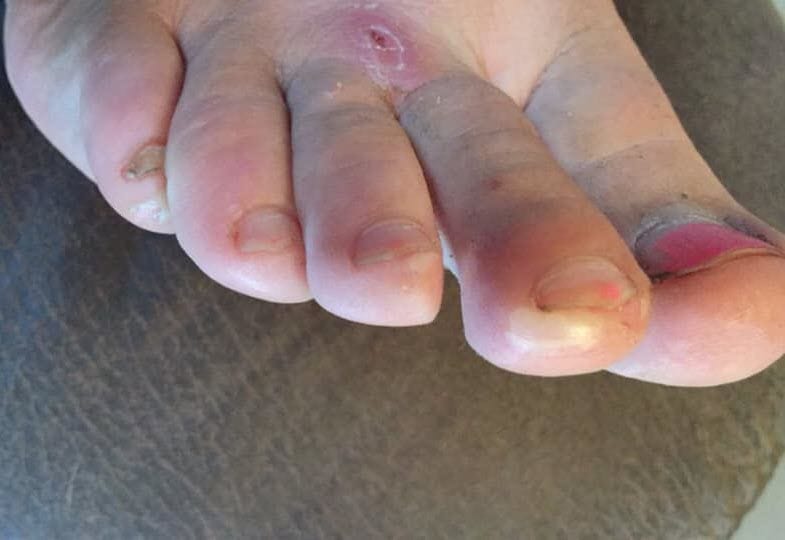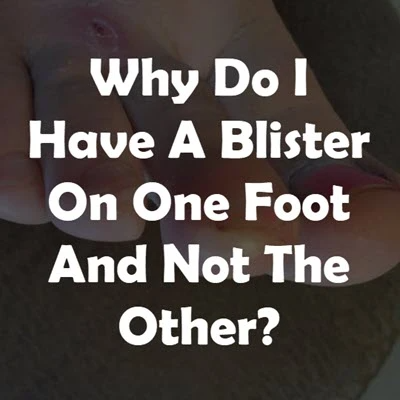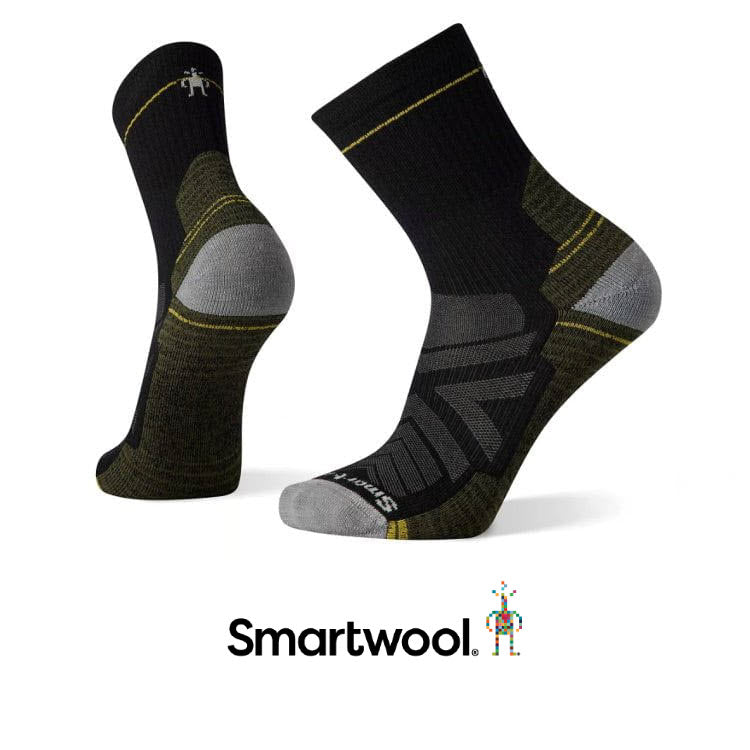Recently, I was helping someone figure out the cause of a blister on their right foot. It was on the tip of the second toe of the right foot. We figured it out and so we were able to implement the right prevention strategy for that blister. She mentioned:
“Weird how I keep getting this blister on one foot only ????”
It’s actually not weird. In fact it would be more weird to get blisters symmetrically on both feet. Here’s why.

Jody's blister on the tip of her second toe right foot
Reasons for structural and functional asymmetry
At birth
Firstly, we're not born exactly symmetrical. One foot is often a bit bigger or slightly different in shape, and this persists into adulthood. This has implications for not only on general foot and lower limb function but also shoe contact pressures. One leg might be slightly longer than the other, one hip position a little more externally rotated than the other, or one little toe a bit more curly and tucked under the next more on one foot than the other. Nothing to be glaringly obvious or problematic when we’re young, but this asymmetry may have implications on functional and structural symmetry elsewhere.
Then as the years go by, we get less and less symmetrical.
Growing up
There are developmental asymmetries as we grow up and get older. In childhood, we might be in-toed or knock-kneed slightly more on one side. These developmental anomalies usually self-correct during childhood, but one side might resolve at a different rate than the other. So these things have implications for foot and leg function and structure at least at the time, if not to some degree into adulthood.
Left/right dominance
We develop a functionally dominant side. This asymmetrical function gradually leads to structural asymmetries in soft tissues (tendon structure, muscle bulk, ligamentous integrity) and bones. We:
- Start a sprint preferring the right foot to be hind the left, or vice versa.
- Kick the footy with one foot in preference to the other.
- Plant one foot in preference to the other in basketball or netball.
- Hold our racquet in one hand in preference to the other which has implications for how we use our feet.
- And what about stick sports like hockey - all that running around half bent over to one side!
All of these things mean our feet and legs are used asymmetrically, and this lack of functional asymmetry is perpetuated over time and may even lead to structural asymmetries.
Injury
You don’t hurt both knees, sprain both ankles or stub both big toes at the same time. Yet these injuries can make us limp or favour one side over the other (ie: function asymmetrically) for days, weeks, months or even years. At some point, the injury heals or is corrected surgically, but does the healing or surgical process really reinstate symmetry? Maybe if the injury was mild and short-lived. Probably not if it was a more severe or long lasting injury.
Then consider injuries that cause a frank structural asymmetry. My dad had his foot run over in his 20’s and developed a bunion and hammertoe on that foot. He had these surgically corrected a few years ago with a great result thanks to his wonderful podiatric surgeon, Nick Marino. While his toes look very similar to the other foot and he’s 100% symptom-free, understandably, the ranges of motion of some toe joints are not the same as the other foot. If he was an avid hiker, runner or footballer (lol), these toes would be subject to different forces and completely understandable that he might get a blister on one foot and not the other.
Other
Then there are a host of other factors that may add to this asymmetry. For example, I walk on the beach most mornings. There’s a significant slope on it. I negate this functional asymmetry to some degree by walking back on the same bit of beach, thereby exposing my other side to the same slope. There’ll be somewhat of a gradient if you run on the side of the road or even some foot paths. What about if you run around a track – you’re always turning to the left.
Consider when you dig in the garden - you’ve usually got one foot on the shovel, not the other. Imagine what this could mean for a gardener that does this all day long. What about when you drive – I drive an automatic and only work the pedals with my right foot. Consider what this means for someone who does a lot of driving every day. Are there aspects of your job that mean you use one foot/leg differently to another?
The forces that cause blisters
Blisters are caused by pressure, friction levels and the movement of the bones under the skin (these forces combine to produce skin shear). Any one of the asymmetries mentioned above can impact on one or more of these. Higher contact pressure from shoes (pressure), one shoe being a bit too small for one foot (bone movement), a closer apposition of toes meaning they remain sweatier (friction levels), all of these things can conceivable mean you’ll get blisters asymmetrically.
In Jody’s case, she had one second toe that functionally bent over (clawed) more when she ran, and this is what caused this toe tip blister on the right foot and not the left. She was off to her podiatrist to confirm this and get a toe-prop made for that toe.






